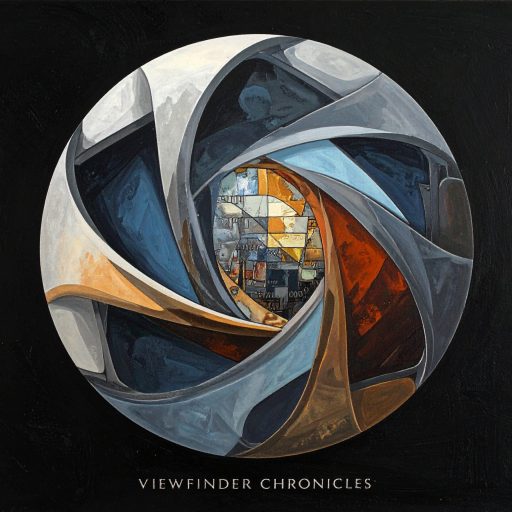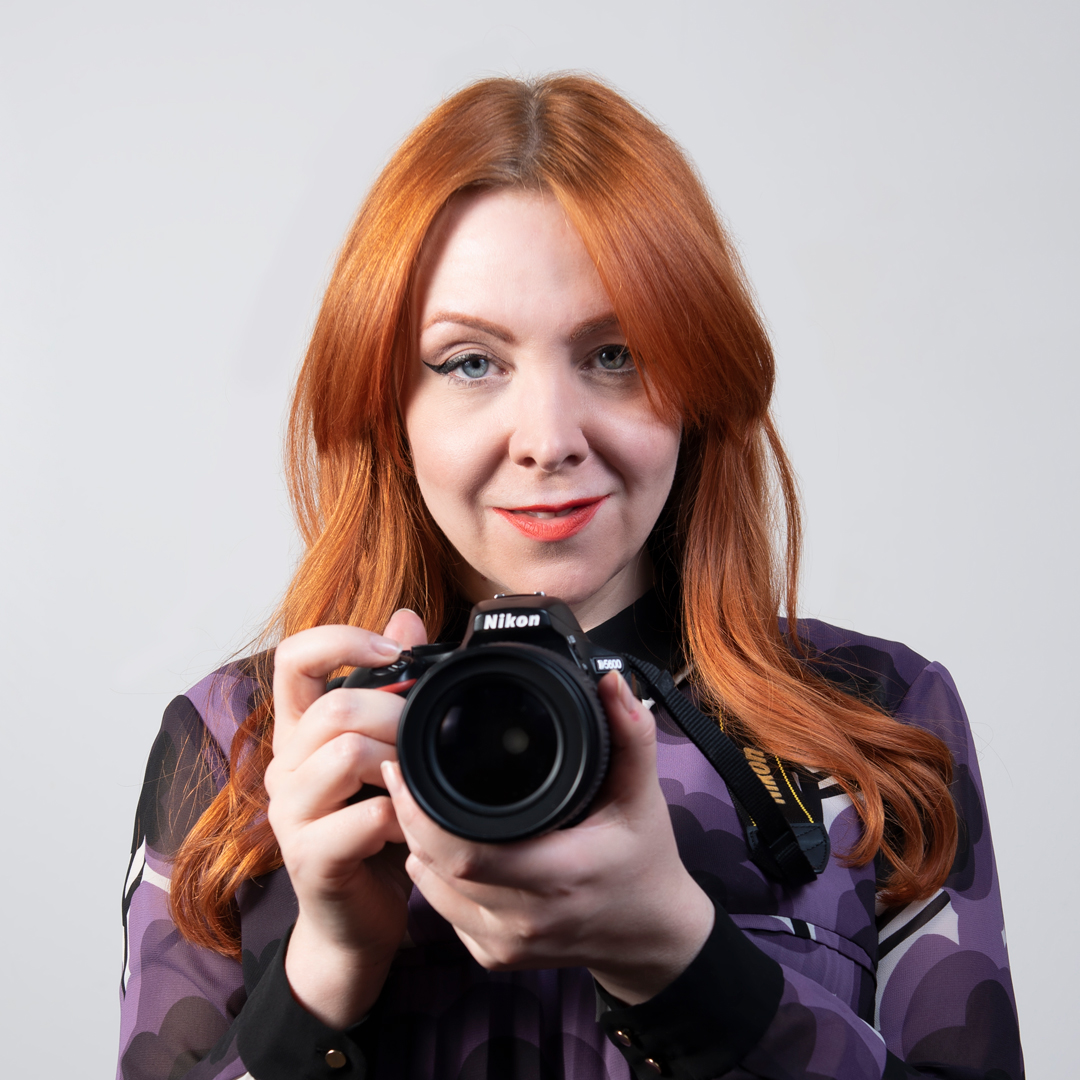
I remember the first time I saw one of Elisa Miller’s photographs. An image of a woman sprawled on a thick red rug, wearing a green dress and a white blouse, smoking a cigarette with a slash of bright red lipstick. Her red hair seemed to burn against the carpet, and I felt a sudden, profound curiosity. Little did I know at the time that the woman in the photograph was Elisa herself. A few days later, another of her sets, Eyes Without a Face, appeared in my feed, a cinematic black and white image of a woman in a long gown and a white mask. It had the feel of a noir horror film, and I was captivated, a feeling of wonder that made me reach out to speak with her.
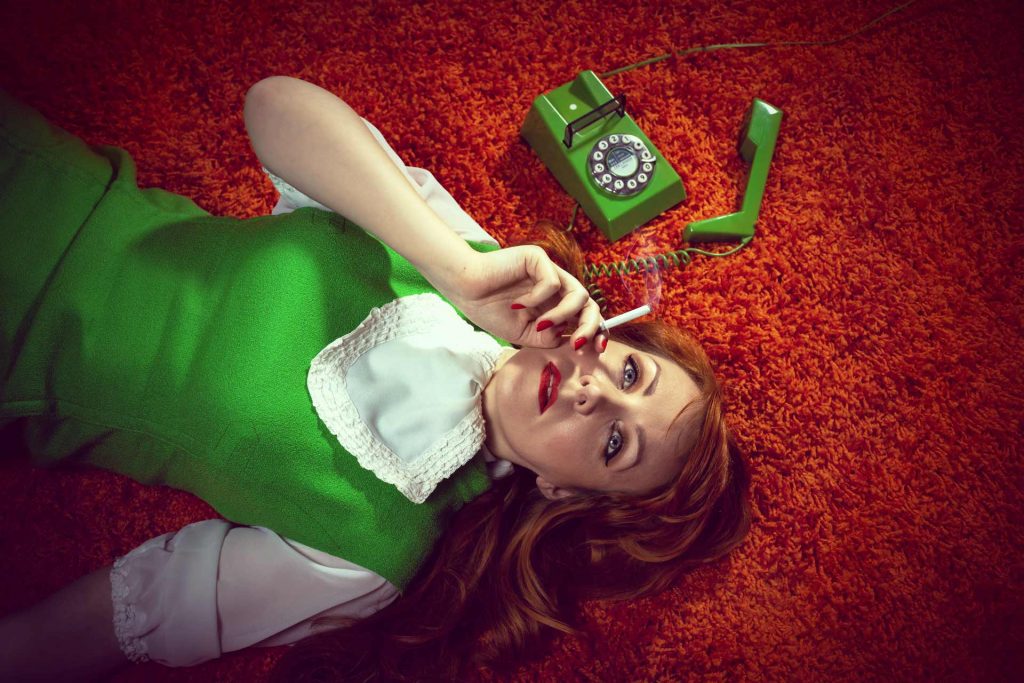
Elisa’s journey to becoming a photographer is as layered and thoughtful as her art itself.
Originally from Paris, she began her creative life as a pin-up model, fascinated by Hollywood glamour and the retro aesthetic of the rockabilly milieu. It was only after she moved to London in 2017 that she began to experiment with photography, starting with her love for urban landscapes and exploring Victorian cemeteries in her new city. While she is now an art director and graphic designer in her day job, her passion for photography has grown into an impressive career. Her talent has been recognized with numerous awards, including People Photographer of the Year at the International Photography Awards in 2021 and Fine Art Photographer of the Year at PX3 Prix de la Photographie in 2022.
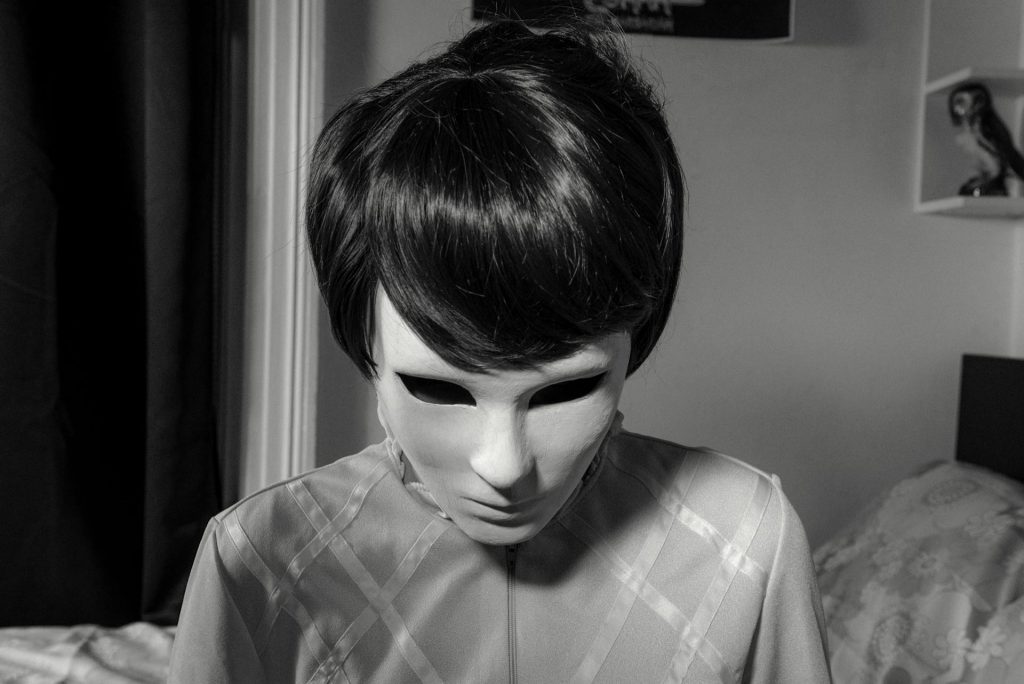
Her work often delves into the weighty philosophical questions of identity and the female psyche. Through a vintage and colourful aesthetic, she explores the impact of societal pressure and how women are represented in art and in the world. For her series The Other, for example, she was profoundly influenced by Jean-Paul Sartre’s famous quote “Hell is other people” and Betty Friedan’s iconic feminist text, The Feminine Mystique. It’s a series that asks us to consider how we can express our true selves within a society that so often tries to put us in a box. It’s a theme that I, and so many artists, feel deeply in our own work, the struggle to be authentic in a world that craves perfection.
Her lockdown series, Contact, is a brilliant example of how she turned a period of isolation into an act of profound self-expression. Unable to meet with people to photograph, Elisa began to work with self-portraits and still life scenes in her own living room. The absence of people in her images was a direct reflection of the isolation everyone was experiencing, and she found a way to tell a human story using objects alone. Her self-portrait from this series, which won the award, was her way of sharing a personal feeling of despair and a momentary loss of identity with the world. This period of self-portraiture was so creatively fulfilling that she carried on with it in other works, like her series Silencio.

Elisa Miller’s photography is a powerful reminder that our most personal struggles can become our most universal art. She creates cinematic universes that feel both familiar and deeply mysterious, inviting the viewer to look closer and question what lies beneath the surface. Her unique ability to weave a vintage aesthetic with thoughtful composition transforms the ordinary into a profound exploration of the human condition.
Here is the interview.
How did you get into photography, I read about how as a teenager you used the 24 photo disposable cameras as it was the only ones available to you, is this where you fell in love with photography or earlier?
Yes, those little disposable cameras were my first, but very brief, doorway into photography. At the time, I was painting, so I wanted to approach photography as another medium to capture my ideas. But I didn’t pursue it for long, and I don’t have any of those photos anymore. I’ve been fascinated with visual art my whole life, first with painting, then cinema. I was devouring classics and alternative films while working in a video rental shop. Later, I moved into modelling because I wanted to recreate the classic pin-up paintings of artists such as Elvgren. It’s only recently that I bought my first camera, right before moving to London, thinking it might give me something to do on weekends as I arrived here with just a suitcase, not knowing anyone. I didn’t have any special plan beyond that.

How has living in London altered your artistic perspective compared to Paris?
Paris is very aesthetic but classic. London feels more restless and eclectic. It’s a place where cultures collide, where contradictions live side by side, like an old church and the Gherkin in the same line of sight for example. My work has a strong Americana feel, and visually I find London offers models, locations, and sets that are closer to that style. In France, I wouldn’t have had the same possibilities to bring those narratives to life.
I am a massive fan of your work and am really interested in your work flow from beginning to end, how do you conceptualize and storyboard your shoots, meticulous planning or improvisation, how long do you on average edit each image and when do you know a shot is finished and no more can be done to it, could you maybe walk me through the creation of a single image, from idea to final product?
Thank you so much! I meticulously plan, that’s the word. I spend a long time working on each shoot. I start with a concept, often rooted in a personal question or theme I’m exploring, and I’ll mood board and sketch ideas. I find the perfect location and cast my models. I source all the wardrobe and props myself, as I’m very specific about the colour palette and the symbolism of the overall image. But once I’m on set, I still leave a bit of space within that tight frame for the unexpected: a gesture, a new idea, an accident that turns magical. The editing is the last touch, mainly to reveal and enhance what has been captured.
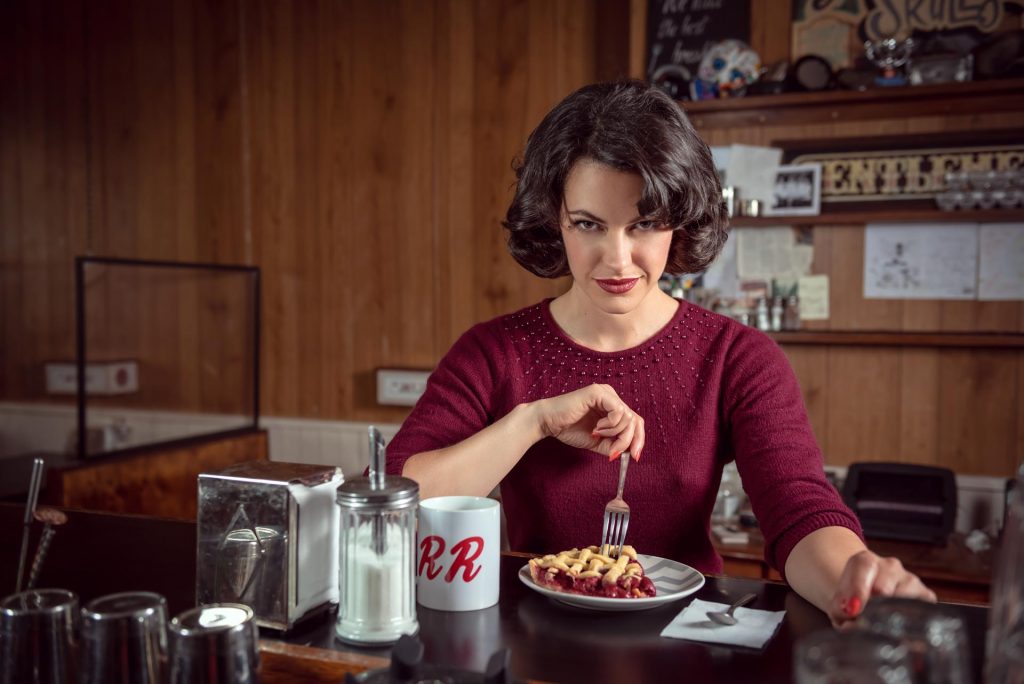
From a photography and art standpoint I am at the beginning of my journey and am devouring everything I can on the subject and getting inspired by and falling in love with people like yourself, I wonder about the toolkit of people I respect and look up to and other than the camera, what piece of equipment would you say is most essential to you?
Lighting. Always. Light is the real brushstroke in photography. The camera records, but it’s with the light that we sculpt. I don’t use natural light and I’m very meticulous with my lighting, so I sketch diagrams during pre-production to make sure I will achieve the mood I’m after. I use a few strobe lights, mainly the Godox AD300 and AD100, which I like for their quality and their convenience in terms of size and portability. I work with several different modifiers and colour gels.
You’ve said your photography is deeply rooted in personal introspection and explores the ‘complex struggles of womanhood.’ What conversations or unexpected insights have appeared from your work and do male and female audiences respond differently to it?
I’ve had a strong, positive response in women’s art circles. I think women see parts of themselves reflected in my images, things they hadn’t articulated before, or that they thought were too private. That intimacy feels powerful. My subjects and concerns are quite universal, I believe questions about beauty standards, the pressure to get married and become a mother, self-confidence, and sometimes feeling powerless in a society where the rules are defined and maintained by men. Men often respond more with curiosity, like they’re being invited into a perspective they don’t usually have access to, or a topic they haven’t reflected on before. Both reactions are valuable, in different ways. My goal is to spark a conversation.
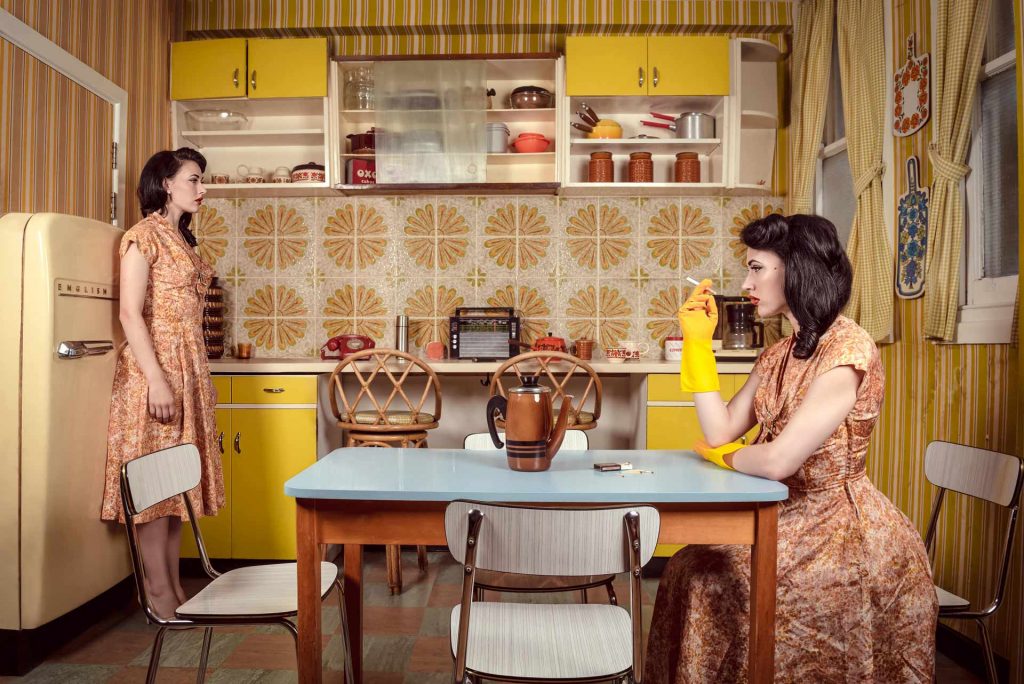
Do you use any specific colour grading techniques for your vintage aesthetic and what role does post-processing play in your creative process?
Yes, I use a bit of colour grading to give a slightly dreamlike, vintage feel to the images, with careful attention to skin tones and shadows. But the essential work is done on set. I use gels to unify the colour palette during the shoot. Editing is the final touch, and it plays a valuable part, where the mood crystallises, but it’s an enhancement, not a transformation.
How did you get into the fine art side of photography and what advice would you give to photographers wanting to get into telling stories that way, it kind of seems daunting to me to get into?
For me, fine art wasn’t a conscious switch. I didn’t even know what “fine art” was at the time. My work grew naturally from realising I wanted to explore inner worlds and social questions through imagery, not just create something “pretty,” as I did at the beginning when I was dipping my toes into fashion photography. My advice: don’t worry about labels. Start with what matters to you personally and shape your own visual language around it. You’ll find out later which category your work fits into.
Like I already said I am loving your work recently having recently come across it and am finding it inspiring along with the likes of Alena Kotzmannova, Susi Belianska, Manuela Federl and some more. Who in the photography world are you looking at and getting inspired by recently?
Recently, I’ve been drawn back to painters who play with surrealism and atmosphere, like Gertrude Abercrombie, Leonora Carrington, or Dorothea Tanning. Magritte too, who’s probably been one of my favourites since my teenage years. My week in New York last year probably reignited this. I had the best time visiting MoMA, the Guggenheim, and the Met, places I’d dreamed of for so many years. Surrealism attracts me for its psychological tension, and it’s given me a strong itch to start painting again. In the photography world, I enjoy the work of big names such as Gregory Crewdson, Alex Prager, and Erwin Olaf. I like the quirkiness of Kourtney Roy, the strong aesthetic of Julia Fullerton-Batten, and the engaged work and vivid colour palettes of Patty Carroll. I’m also inspired by the poetic and surrealist feel of Astrid Verhoef, and the powerful storytelling of Tania Franco Klein…just to name a few.
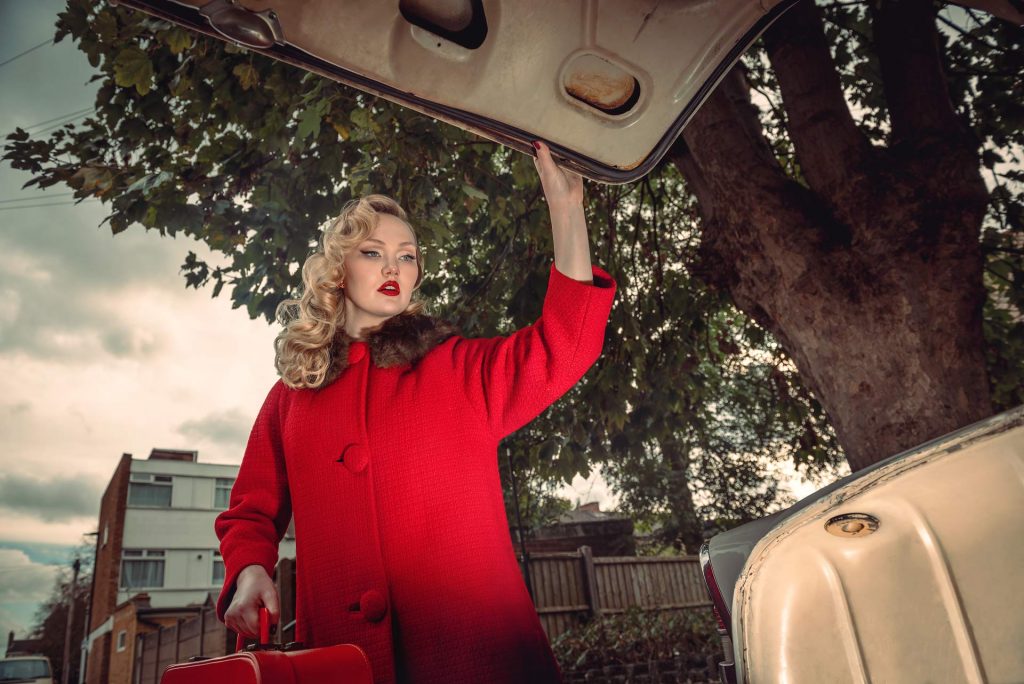
I have a Nikon D5600 camera and a couple lenses (not the best but as I said earlier, I am still in my infancy regarding photography), but I got myself a Canon AE-1 35mm camera this week and some film, I am excited to get using it. Do you use much film camera and in a wider question what cameras and lenses are you using just now?
That sounds like a lot of fun! No film for me, I shoot only digital, because it allows me more flexibility to adjust everything on set and in editing. I use a Nikon full-frame DSLR, the D750. Regarding lenses, I have 3: my go to is the Nikkor 24-70mm f 2.8, for portraits a Nikkor 50mm f1.4, and a wide angle 10-20mm f4.5-5.6. Nothing fancy, really. I recently purchased a Polaroid camera though, and I want to experiment with this very small format, to connect with something more raw, capture details differently, and maybe bring another dimension to my sets. We’ll see.
What do you have planned for the rest of 2025 and beyond?
I’ve been working these past months on a new project, which explores childhood influences on adulthood. Pre-production is almost completed, and I plan to shoot this autumn. I’d also love to exhibit again internationally and collaborate with galleries. Connect with me on social media if you’d like to see more of what’s coming next! Thank you so much for your kind words and this interview.
Find her at the following places online:-
- Website – https://elisamillerstudio.com/
- Instagram – https://www.instagram.com/elisamillerstudio/
- Facebook – https://www.facebook.com/elisamillerstudio.page
- YouTube – https://www.youtube.com/@elisamillerstudio
Regards
Alex
